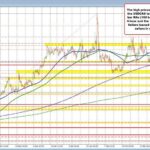Navigating US 30-Year Yields: What Rising Rates Mean for Consumers and Investors
Tháng 4 10, 2025
Navigating the USD/CAD Downtrend: Technical Insights and Forecasts for Forex Traders
Tháng 4 10, 2025Understanding the Trump Administration’s Tariff Strategy: Insights from Stephen Miran
In a recent discussion, Stephen Miran, the chair of the US Council of Economic Advisers, provided a detailed analysis of the Trump administration’s tariff strategy, underscoring its multifaceted rationale. This comprehensive approach not only aims to realign global trade dynamics but also seeks to ensure that other nations contribute to the costs associated with the US’s role in maintaining global public goods.
The Concept of Burden Sharing
One of the central themes Miran highlighted is burden sharing. He emphasized that the United States has historically maintained global public goods such as security and financial stability—problems that inherently come at a significant cost. Miran’s stance is that it is only fair that other countries take on some of this burden. This can occur in various forms, including the acceptance of tariffs, market opening, increased defense spending utilizing US-manufactured goods, investments in American manufacturing, or even the purchase of US Treasury securities. In a global economy, this shift aims to lessen the financial liabilities placed solely on the US, promoting a more equitable distribution of responsibilities.
The Economic Impact of Tariffs
While tariffs are often viewed as economic tools meant to protect domestic industries, Miran articulates a critical observation: the cost of tariffs is predominantly borne by the nations subject to these tariffs. Unlike the United States, which boasts diverse sourcing options to mitigate the impact of punitive trade measures, affected countries face significant challenges when trying to redirect their exports. This dynamic may result in the US gaining an advantage in the short term, as competitor nations struggle to adapt financially to the newly imposed taxes.
Strategic Focus on China
The strategy prominently targets China, regarded as a key economic adversary. Significant tariffs have been imposed with the intention of not only creating economic pressure but also pushing for a broader economic decoupling. This decoupling involves the development of new supply chains that actively exclude China, aiming to reduce dependence on its manufacturing capabilities. By doing so, the Trump administration seeks to bolster American manufacturing and promote self-reliance in crucial sectors. In light of this, an interesting discussion can be drawn upon the larger implications of China’s strategic moves in response to these tariffs. This blog discusses China’s strategic moves under President Xi Jinping amid escalating U.S.-China trade tensions, emphasizing the need for international stability and highlighting China’s commitment to being a favorable investment destination.
Economic Rationale Behind Tariffs
Despite criticisms and fears regarding a potential recession spurred by the imposition of tariffs, the administration remains steadfast in its belief that these measures are essential for strengthening the US economy. Miran articulated this viewpoint, suggesting that the tariffs would ultimately boost domestic manufacturing and help reduce trade deficits. This focus on revitalizing American industry aligns with a broader economic strategy to transition away from reliance on foreign competitors and reinforce the country’s economic foundations.
In conclusion, Stephen Miran’s insights into the Trump administration’s tariff strategy reveal a complex interplay between international economics and national interests. By advocating for burden sharing, targeting economic adversaries like China, and emphasizing domestic manufacturing, the administration aims to recalibrate the global economic landscape in favor of the United States. As these policies continue to unfold, their implications will undoubtedly shape not only the US economy but also its relations with trade partners around the world.
